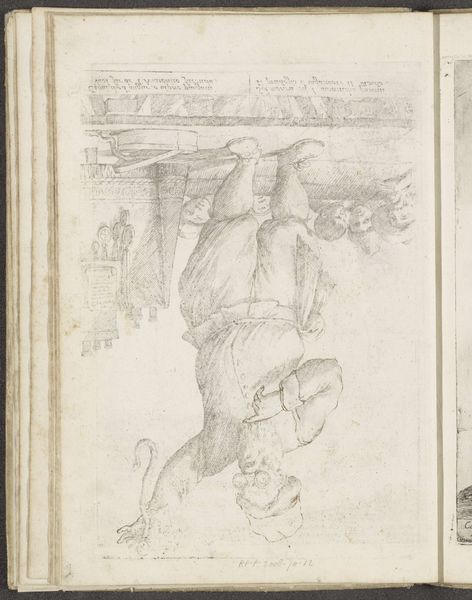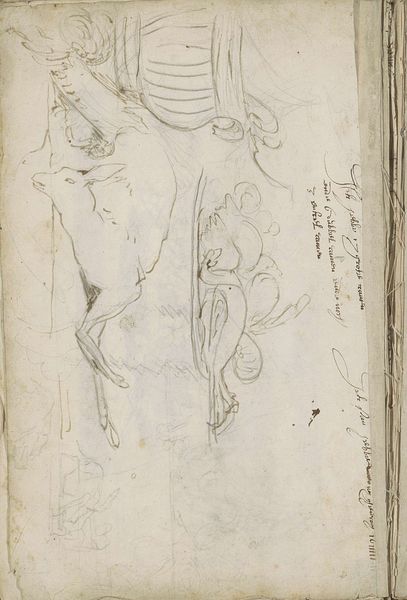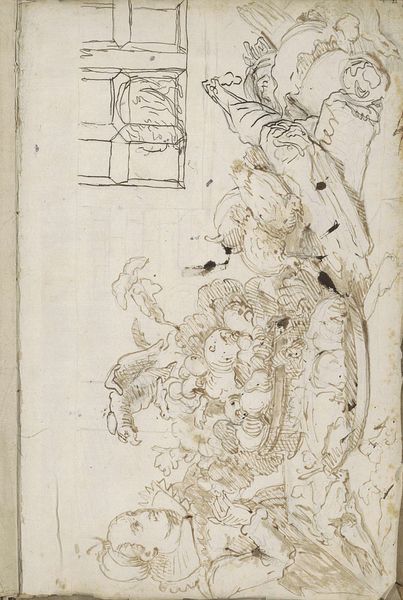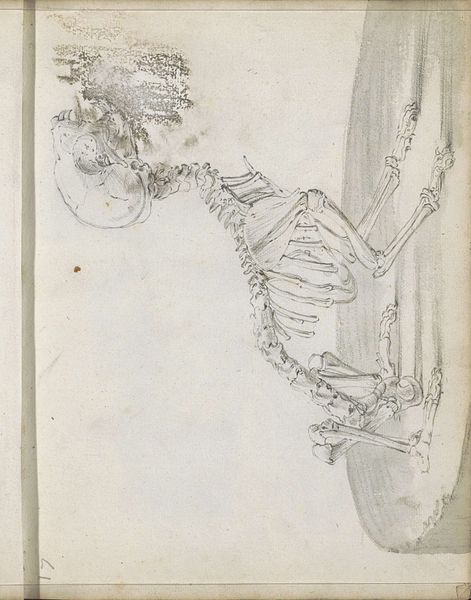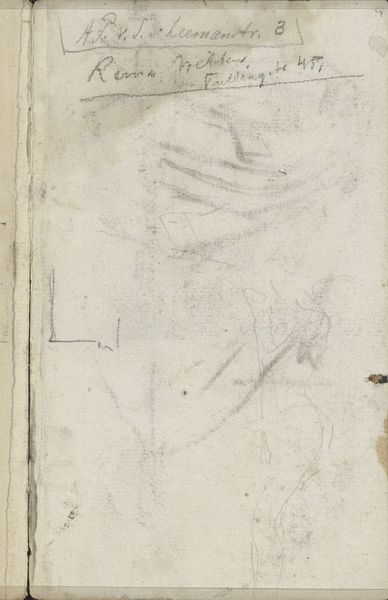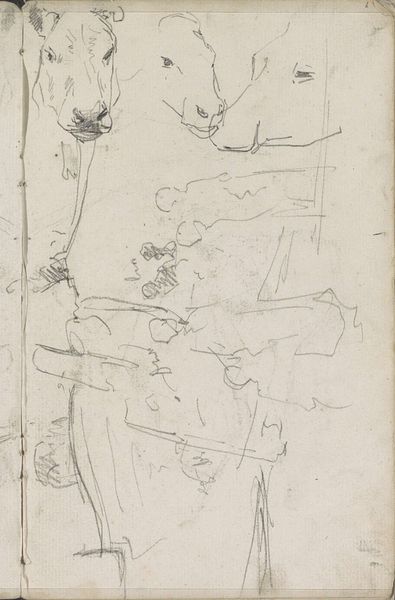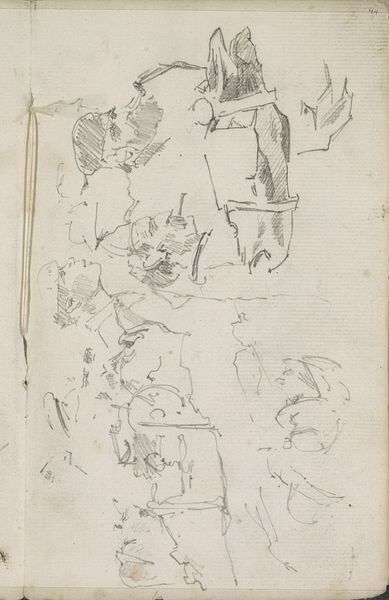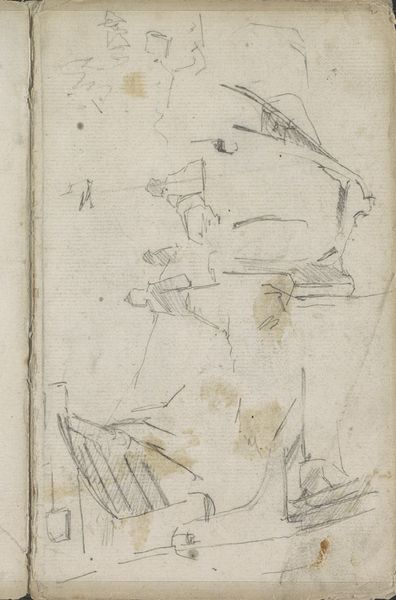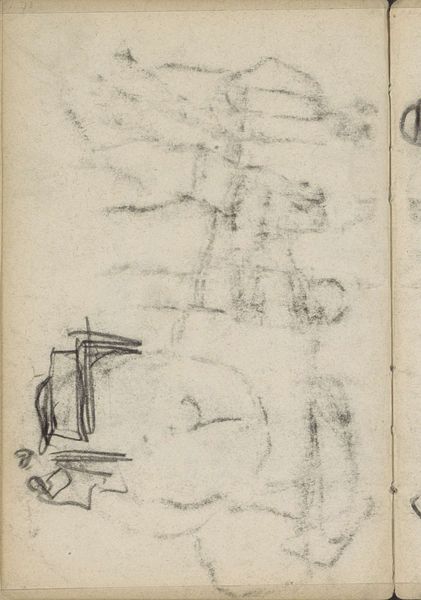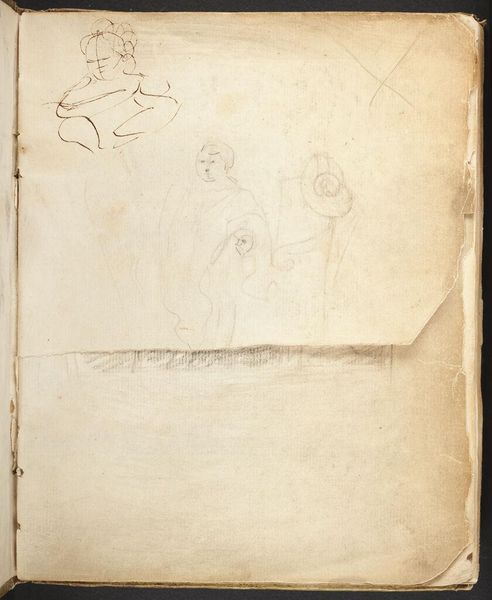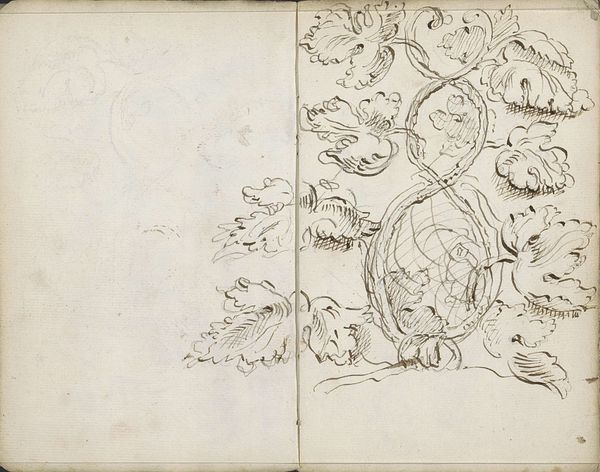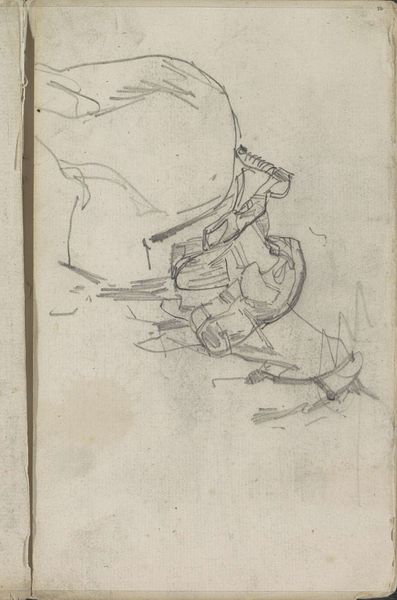
drawing, paper, pencil, graphite
#
drawing
#
landscape
#
paper
#
pencil
#
graphite
#
realism
Copyright: Rijks Museum: Open Domain
Curator: Welcome. Here we have "Duinlandschap," or "Dune Landscape," a drawing created with graphite and pencil on paper by Jozef Israëls around 1855 to 1859. It's currently held in the Rijksmuseum. Editor: Well, my immediate thought is that this is more than just a sketch—it’s an exercise in seeing. The visible marks, the varying pressures of the pencil... I see an artist thinking aloud. Curator: Yes, it certainly has that workshop feel, doesn’t it? We see Israëls grappling with how to depict the fleeting essence of the landscape. The social context is fascinating here; Dutch art was undergoing a shift, moving away from grand historical painting towards more intimate, realist portrayals of everyday life, especially themes that resonated with a growing middle class. Israëls was pivotal in that. Editor: Absolutely. And you see that in the emphasis on materiality too. The stark contrast in graphite shows the layering and depth that one can achieve with a single pencil. There is a focus on the marks that give shape to the overall landscape. I’m struck by the directness, the lack of polish. Curator: True. The realist movement prioritized representing the world as it was, flaws and all. There’s a humility here, mirroring the kind of social humility that Dutch culture often celebrated. It suggests a leveling effect – the artwork doesn’t glorify, but witnesses. This also marks an interesting point in art history. The market was changing, so subjects that could find patronage beyond royalty and nobility rose in popularity. Editor: Right, we shouldn't forget the influence of new materials and accessibility too. Advances in graphite production meant it became cheap for mass consumption allowing more drawing available for aspiring and working artists. This is why, even with a minimalist use of materials and sparse landscape scenery, it echoes the values of the Realist movement. Curator: It's compelling to consider how Israëls leveraged humble materials like paper and pencil to echo larger conversations and how artistic taste in the Netherlands began shifting away from ostentatious aristocratic work towards sincere work, aimed to make art accessible. Editor: Yes, indeed. For me, this artwork serves as an example for considering artwork making through a material lens; in this landscape we consider not only the depiction but the action of the making.
Comments
No comments
Be the first to comment and join the conversation on the ultimate creative platform.
